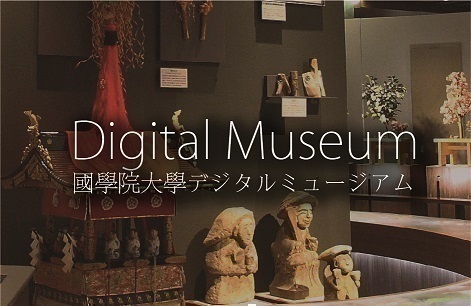- トップ
- Encyclopedia of Shinto
- Taiko odori
Encyclopedia of Shinto
| Main Menu: | |
| Links: |
詳細表示 (Complete Article)
| カテゴリー1: | 5. Rites and Festivals |
|---|---|
| カテゴリー2: | Performing Arts |
| Title | Taiko odori |
| Text | A folk dance of the furyū odori type. It is a group dance, in which the dancers hang a drum (a taiko or a kakko) from their chests or around their waists and carry banners (nobori) and a large altar (himorogi) on their backs. The drums are beat to the accompaniment of a hayashi instrumental ensemble that includes the wooden percussive clapper (sasara), flute (fue), and handbell (kane). The dance serves such ritual purposes as the avoidance of calamity, a prayer for good harvest or thanks for one, warding off insects from the rice fields, and prayer for rain (amagoi, see kiu, shiu), and so forth. In many instances it is accompanied by furyū songs. The dancers form a procession (michiyuki) and wind their way toward the grounds of a temple or shrine. Widely dispersed in this form throughout western Japan, in eastern Japan the taiko odori also includes a solo lion (shishimai) or deer (shishi-odori) dance. Taiko odori are held under a variety of names and with various unique features throughout the country. For example, they are known as kakko odori and kanko odori in and around Mie Prefecture; in Hyōgo Prefecture it is the zanzaka odori; the gaku-uchi takes place in Fukuoka and parts of Oita and Yamaguchi prefectures; Miyazaki, Kumamoto, and Oita prefectures are home to the usudaiko odori; and taiko odori of various sorts may be found Oita to Kagoshima prefectures. The dance is said to be a refined form of the tabayashi no dengaku, a musical accompaniment for rice-planting, and the dengaku odori, a professionalized dance form related to sangaku (see saru-gaku, den-gaku). However, in some regions it has a strong element of the nenbutsu odori (in which the chanting of the nenbutsu is combined with dancing) and is performed as part of the memorial service (kuyō) at niibon (the first Obon to take place after the death of the person being memorialized). Many taiko odori serve as rain dances, which is because it was believed that the sound of the drums resembled that of thunder and could summon rain. The performing art wherein a group of people play drums as they dance around an ōdaiko player in their center as is done in the phoenix dance of Nishi Tama District, Tokyo, in a broad sense may also be said to be a type of taiko odori. — Takayama Shigeru |




